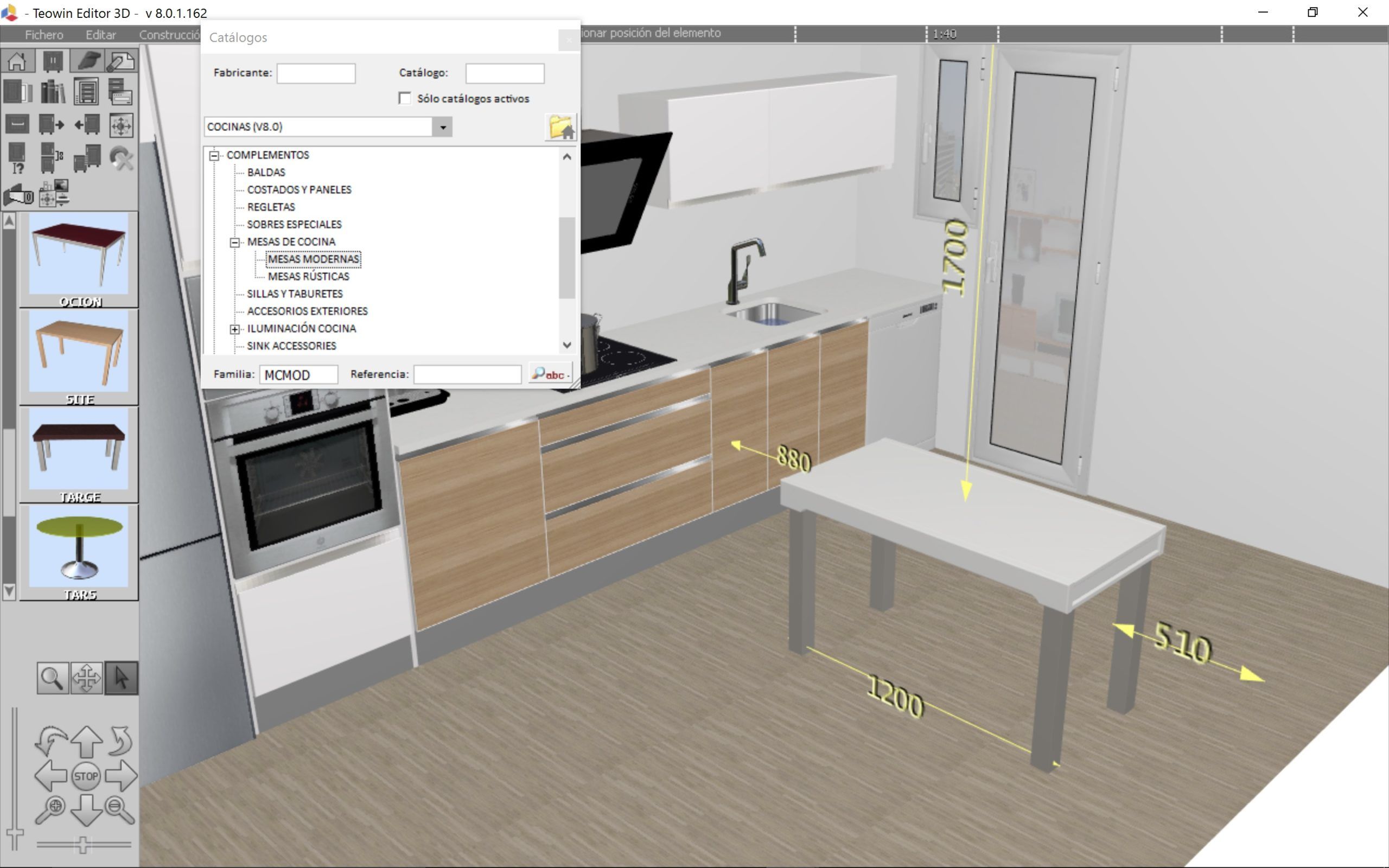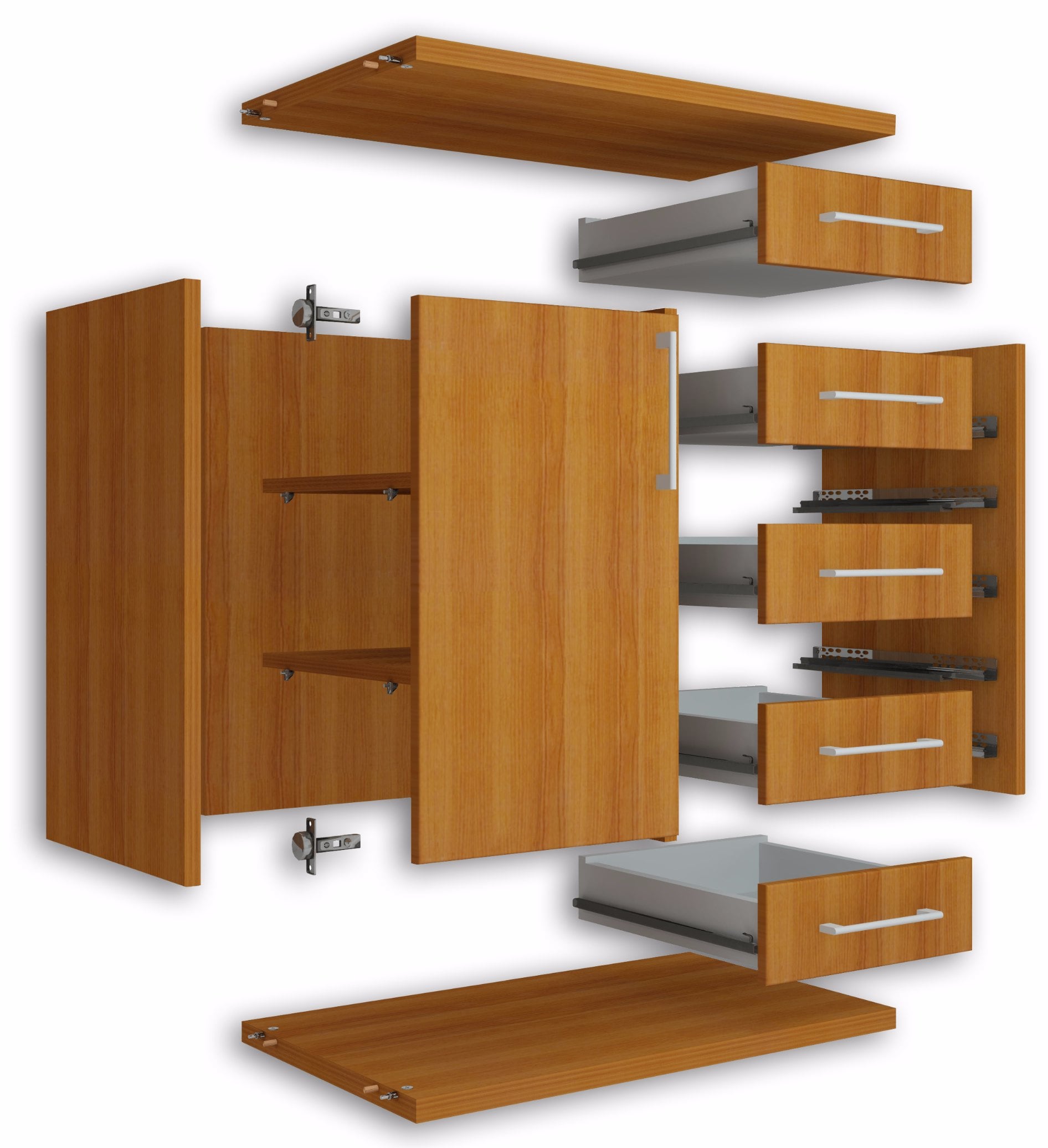When creating furniture, it is essential to follow processes that go beyond construction itself. They also involve the ideation and formalization of a project. We could say that one of the main processes in building furniture is the creative one, which could even be considered an artistic activity. Creating a piece of furniture from scratch based on a well-structured design becomes a highly rewarding and thoroughly creative task.
Furniture design in carpentry requires a mental process prior to production, combining previous experience or inspiration from seen models. Within carpentry, it is necessary to establish procedures that reinforce the design stage in order to develop furniture that is both functional and aesthetically pleasing, while optimizing costs and processes.
Although there are many ways to execute a design—whether through hand sketches or design software such as AutoCAD—relying on specific software for furniture design can greatly simplify the task.
But first, it’s important to consider the stages involved in the creation process, both before, during, and after the design phase.
The Furniture Design Process
Research and Feasibility Stage
Let’s listen carefully to the client’s needs, tastes, and requirements by asking the right questions:
What style should the design have?
What problem is the client trying to solve with this piece?
In which room will it be used?
What limitations or special needs must be considered?
What is the budget?
What materials or finishes are preferred?
What is the expected timeframe for completion?

Concept Design or Sketch Development Stage
Once the feasibility phase questions have been clarified, the carpenter can move on to creating a design that adapts to those requirements by drawing and outlining the shapes and elements that will define the piece.
Tips for this stage:
Create in a harmonious and calm space, preferably well-lit and uncluttered.
Work with proper inspiration before starting to design.
Have a clear vision along with the measurements of the intended space.
Keep a sample book of woods, stains, and laminates to guide the client in choosing tones, textures, and materials based on resistance and durability.
Save photos of each project. Creating a portfolio allows you to innovate and incorporate new creative elements. Good renders can serve this function.
Use technological tools such as computers and reliable software for designing.
Teowin works directly in 3D, offering users a real-time view of the space and appearance of the design. It generates stunning renders, high-quality 360° panoramic images, presentation videos, and interactive online 3D rooms. It also includes multiple traditional and cutting-edge presentation options for showcasing your work flawlessly. Additionally, it offers many automated functions to help create projects quickly and efficiently. It simplifies the construction of furniture compositions and facilitates space decoration.
It also includes extensive libraries of all types of furniture, textures, and decorative objects, allowing users to begin designing immediately after installation—making furniture design tasks in workshops much easier.
Detailing and Integration Design Stage
This stage emphasizes the technical and functional details. Dimensions, measurements, materials, and finishes are fully defined. The visual and practical aspects are integrated to give the design its final shape. Usage and visual tests are conducted to verify the product’s success.
Activities in this third stage may include:
Final Design Production
Drafting a technical specification sheet
Feasibility analysis
Teowin Fabrication treats furniture as dynamic objects capable of incorporating as many parameters as needed (dimensions, colors, models, cutouts, handles, etc.).
Once a piece is designed, it generates all necessary technical documentation to clearly define all specifications and commercial features (plans, parts list, renders, pricing, etc.).

Prototyping and Presentation Stage
This stage is not mandatory but may apply in some cases, especially in factories producing furniture in series.
Typical activities include:
Technical analysis of the design
Economic feasibility study
Material resistance and performance testing
Risk assessment
User testing
Cost analysis
Budgeting for molds and accessories
Material analysis with suppliers
Staff training on assembly, finishing, and packaging
Once all variables are introduced, Teowin Fabrication automatically calculates the material supply and all tasks needed for production. It also generates all necessary reports to coordinate the work of each operator (cutting, edging, machining, assembly, etc.).
Another feature of Teowin Fabrication is the calculation of the real production costs, considering raw materials, labor, and other factors that may increase value.
Production and Consolidation Stage
Great! The furniture piece is finished. At this point, you’ve achieved the goals set with the client. The result is a piece that integrates functionality, originality, quality, aesthetics, and durability.
Maintaining a reflective and analytical attitude to continue improving future projects is crucial. The market is constantly evolving, so asking yourself how to keep updating your designs to strive for excellence is key to staying ahead.
Our professional opinion
Furniture design doesn’t apply only to large factories. In our view, it is also a fundamental process for any carpenter. It’s essential to approach furniture design as a mental and creative journey aimed at producing unique, sublime objects. Focusing on aesthetics, quality, and finishing allows you to create a positive impact on your clients’ lives through your work. Design is the result of consistency in every strategy.
At Teowin, we are committed to supporting you through every step of your furniture manufacturing process. Shall we talk?
